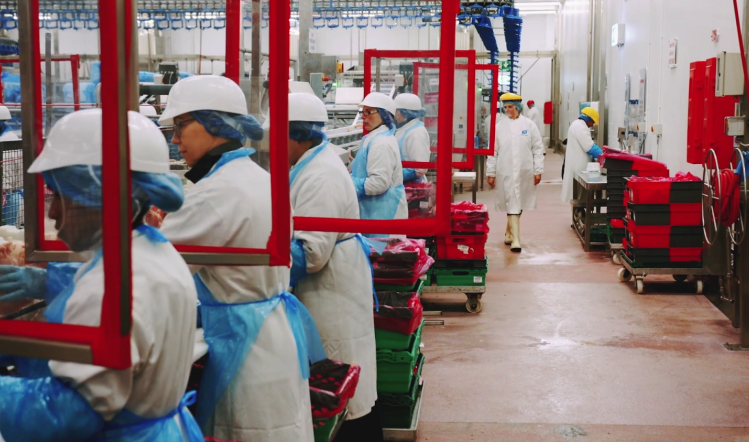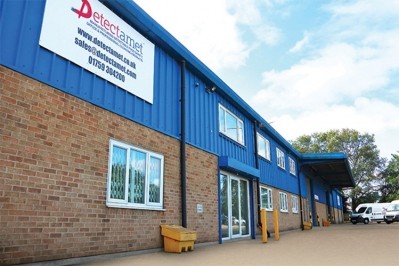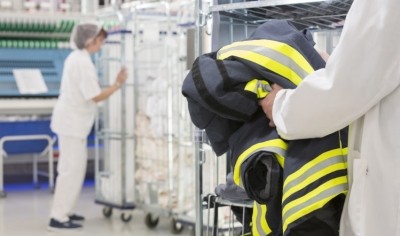Health & Safety Digital Feature
COVID-19 shouldn’t obscure other health & safety risks

Some large processors have invested millions of pounds in personal protective equipment (PPE), the installation of screens to prevent cross contamination and the implementation of social distancing on the shop floor.
The industry had a head start on the issue, with its existing focus on hygiene standards. However, the challenges presented by the coronavirus are constantly evolving, and yesterday’s solutions could pose larger problems further down the line.
As Institution of Occupational Safety and Health (IOSH) Food and Drink Industry Group chair Craig Foyle explains: “This issue has lasted a lot longer than originally anticipated and the introduction of new variants has caused a great deal of concern.
“If the food and drink industry do not rise to the challenge, then they will not be able to operate and supply their customers. It has never been more important to maintain the strict controls that are already in place and keep on the lookout for improvements.”
Some of the latest thinking has concentrated on the air quality of facilities, as experts claim fresh air can disperse the virus and cut infection risk by 70—80%. But having fresh air circulating the factory isn’t always possible or practical.
Air quality
Technology could help. Improving air quality in indoor spaces such as food production plants via purification technology has been the focus of research by the Fraunhofer Institute for Building Physics in Germany on behalf of SSE Enterprise.
Tests of the Ionair Air Quality System (AQS) suggested the technology reduced the concentration of virus particles by between 99.49% and 99.59% within a controlled facility. That’s on top of its ability to reduce odours by up to 50% and slash the amount of germs, bacteria, fungus and pollen present by 95%, Ionair claims.
Kostas Papadopoulos, head of smart cities solutions development at SSE Enterprise, says: “We welcomed Ionair's efforts to commission Fraunhofer IBP to rigorously test the effectiveness of their proprietary technology against a surrogate virus that is extensively used in coronaviruses and influenza studies.
“The results from this study are extremely positive and we view them as a strong indication that the risk of infection from airborne viruses is reduced when Ionair AQS is in use. It is our hope that with this technology we can help improve the safety of buildings, providing further reassurance to the public when they start to return to workplaces in greater numbers later in 2021.”
Another knock-on effect of the spread of coronavirus has been the increase in instances of hand sanitising and the wearing of PPE for much longer periods of time. Unfortunately, research suggests that, although these actions are not the only contributory factor, they have increased the risk of dermatitis among employees.
Growing risk of dermatitis
UK safety expert Arco has raised awareness of the growing risk of occupational dermatitis and a wider range of skin conditions. The Health & Occupation Research Network makes the shocking claim that these have cost Britain 269,000 working days a year.
The average cost on a company for each reported case comes to about £6,000, including compensation, fines and legal fees. With one in ten employees reported to be suffering from occupational dermatitis, a 250 strong company could face fees of £200,000.
But sometimes employers could be unaware of the risk. Workers can sometime be reluctant to report symptoms over fears of losing work hours and suspending production unnecessarily, despite the health risk the disease represents.
Darren Williamson, Arco product and procurement manager for cleaning and hygiene, says: “Too often a lack of employee complaints means employers assume dermatitis is a minor risk. But the truth in the silence is workers can feel embarrassed, have a lack of understanding about the condition or fear they could lose their jobs.
“Worse still, underreporting means existing statistics merely represent the tip of the iceberg. We must raise awareness of the help available before employees and employers end up paying the ultimate price.”
COVID-19 may be the highest profile health and safety concern in food factories, but familiar issues still threaten workers’ health every day that warrant just as much attention.
Two such areas are hand arm vibration syndrome (HAVS) and noise control.
Tackling HAVS at a production site is a common issue well known to many a factory operator – the Health and Safety Executive estimates up to 2m people are at risk.
The most efficient and effective way of controlling exposure to hand-arm vibration is to look for new or alternative work methods that eliminate or reduce exposure to vibration. Of course, replacing a piece of important equipment isn’t always a simple solution.
One remedy being offered by protective gear producer Aquila is its TOG5V gloves for anti-vibration and general hazard protection. They offer impact & vibration resistance in a cut resistant material coated with sandy nitrile to provide extra grip.
Silicon pads on the gloves provide the bulk of the vibration protection, as well as reducing hand fatigue, and ensure they are longer lasting than a comparable glove made with polyvinyl chloride (PVC).
Outside of their primary function, their bright hi-vis neon colours are a safe choice in low light settings, making them easier to spot by co-workers.
Top 10 Noise control techniques
The Industrial Noise and Vibration Centre offers its solutions to the ten most common industrial noise problems:
1 -- vibration damping: reduce noise from, for example, guards, hoppers, conveyors, tanks
2 -- vibration isolation pads: isolate motors, pumps, hydraulics from noise amplifying sounding boards
Fans
3 -- fan installation and efficiency: maximum efficiency = minimum noise – fan installation best practice guide
4 -- aerodynamic fan noise control – silencing without silencers: retro-fit modifications = less noise + higher efficiency
Pneumatics
5 -- pneumatic exhaust silencing: efficient attenuation with zero back-pressure
6 -- pneumatic nozzle noise reduction: efficient nozzles that produce less noise and use less air for the same performance
Machines
7 -- chains and timing belt noise: simple modifications to reduce noise levels
8 -- electric motor noise: some are easily modified and some should be sent back due to excessive noise
9 -- hydraulic power pack noise: many are designed to maximise noise levels – easily corrected
Existing Machine Guards
10 -- Convert to acoustically effective guards: existing safety guards can often be modified with appropriate consultation to make them effective acoustic guards
Of course, outside of the occupational health benefits of reducing noise produced by the production line, identifying a noisy machine could help prevent a major breakage before it happens.
As a last resort, the use of PPE such as ear protectors and ear plugs can plug the gap should the removal of machine noise become unfeasible. But there are some caveats that come with this method.
As IOSH’s Craig Foyle warns: “They are not all the same and care must be taken to ensure that the level of noise into the ear is reduced to a safe level without removing all sound, as you need to be able to hear emergency information and alarms.”
Sensors to prevent access to hazardous machinery
Aside from the issues raised by COVID-19 and the persistent problems of HAV and noise control, another perennial health and safety risk is poorly guarded machinery.
A new single-beam safety switch designed to reduce machine downtime while protecting personnel from hazardous machinery has been unveiled by sensor producer SICK UK.
The SICK L25 and L26 are Type 2 devices available in visible red light and infra-red (IR) versions for wide versatility in safety applications up to PL c (SIL 1). The IR and red-light versions could also be used together to avoid the potential for signal interference and introduce redundancy for applications requiring a higher level of safety.
The system has a scanning range of 50 metres and can be used as collision or access protection of barrier, gates, doors and tacking systems – even across multiple access points at longer scanning distances.
Using multiple sensors can allow for perimeter guarding of machines, access protection to robot cells, as well as loading and unloading areas.
The switches can be incorporated into existing smart systems to give operators timely information on when and where an incident has taken place.
“The newly-incorporated IO-Link connection means operators can know the condition of each single safety sensor in real-time, so productivity is not compromised by unplanned stoppages,” explains SICK UK safety specialist Martin Kidman.
“Timely alerts are sent if safe operation is at risk, for example, due to contamination on the sensor or vibration. Equally importantly, the reasons for any safety stops can be quickly identified so that production is resumed without delay.”
















